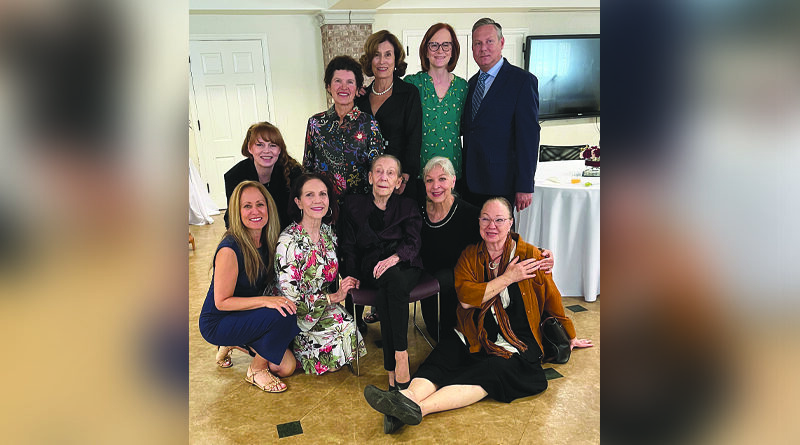Former Dancers Fondly Remember Bill Atkinson
For 54 years, Bill Atkinson and his wife, Ann Etgen, trained generations of ballerinas in their studio on Hillcrest Avenue.
They were completely devoted to their art and gave everything they had to their young dancers. Being in their studio, former student Tara Moore said, “was a fairy tale in real life.”
The pair was generous with their time, putting in extra hours without charging students. And they demanded the same discipline and commitment to excellence of their pre-professional ballerinas at the Dallas Metropolitan Ballet and associated Etgen-Atkinson Ballet School.

“(It was) very challenging, very demanding, but we loved it,” Moore said. “If we had a two-hour class, we begged for three. We never could get enough.”
Former ballerinas, many of whom went on to dance professionally with troupes in the United States and abroad, honored the life of “Mr. Bill” on May 1 during his Memorial Mass and Celebration of Life at Christ the King Catholic Church. Atkinson died on March 27 at age 94, a decade after his studio closed its doors in 2014.
“They were amazing and relentless. You had to work hard to be there,” said former dancer Lesleh Gage, who went on to study at the School of American Ballet in New York. “They gave me an opportunity of a lifetime.”
Trish Muller Koran remembered how protective Atkinson was of his students. During a performance of Peter Pan, Atkinson insisted he try the harness used to fly around the stage himself first to make sure it was safe.
“He could be very blunt. But it was just his way of being realistic with us and saying, ‘look this is what you’ve got to do,’” she said. “He was in the business of making professionals out of us, and they produced a lot of professionals.”
Max Fuqua, a former student who studied dance at the School of American Ballet before joining the San Francisco Ballet and later the Zurich Ballet as a principal dancer, began his remarks at the memorial with words about Atkinson’s commitment to technique and quality.
But Atkinson, Fuqua said, was also “an unabashed patriot, a capitalist, and an entrepreneur. He embodied the American ideals of independence, creativity, and toughness.” Before his dance career, Atkinson volunteered for the U.S. Army and eventually rose to the rank of sergeant, “something he would certainly go on to use in his ballet classes.”
Atkinson resisted efforts to commercialize his business, and emphasized that dance was an art, not a competition. He and Etgen focused on the students in their studio and the quality of their work, rather than on modern technology or their building’s aesthetics.
Photos on the walls were printed in black and white, and students danced to music from record players that would skip when they jumped, remembered Stephanie Brogdon, who danced with Atkinson from when she was 3 to 18. “They lived, and breathed, and spoke ballet,” she said.
Atkinson’s love of ballet was second to his devotion to his wife, Ann, who he adored. In recent times, it was not unusual for visitors to find Bill on his knees, praying for her health and safety, Fuqua said in his remarks.
“Take heart, everybody, this ballet has a third act,” he said, “and in it we will all be together again.”









